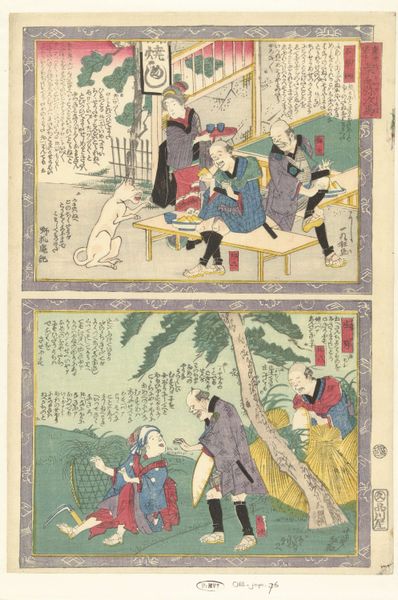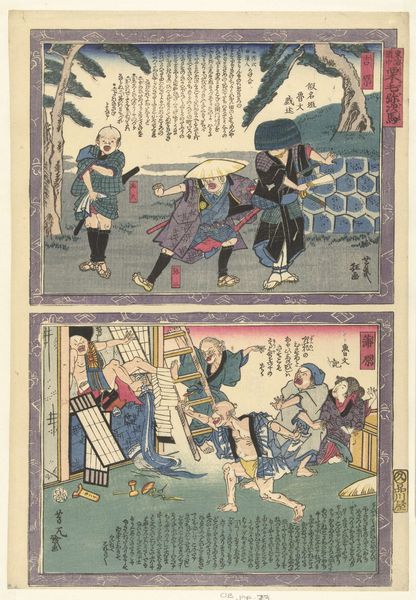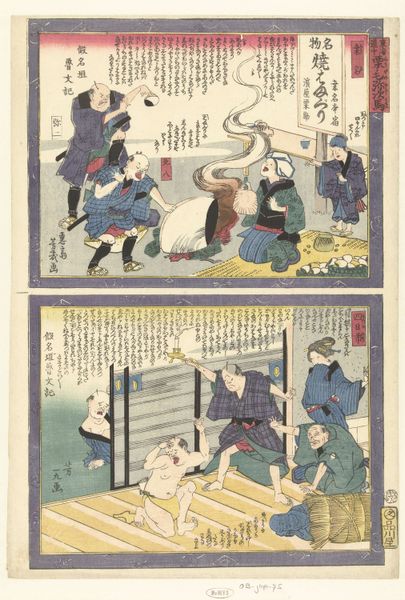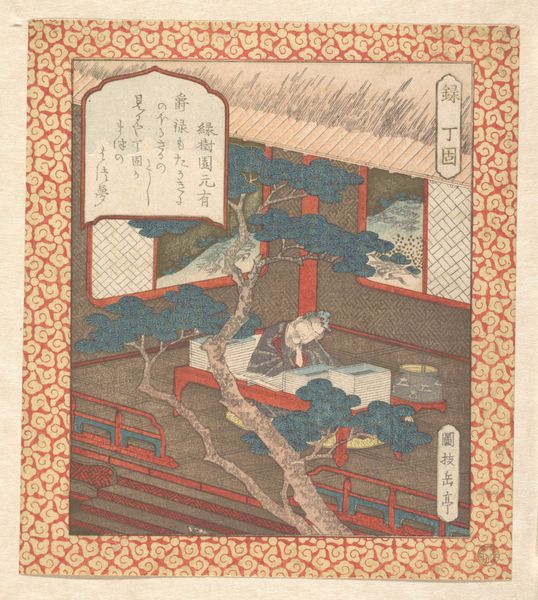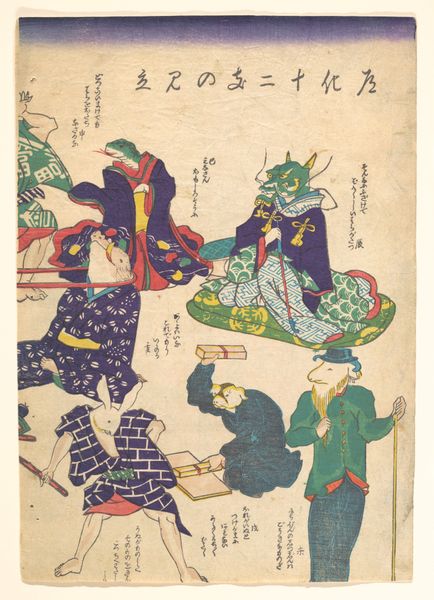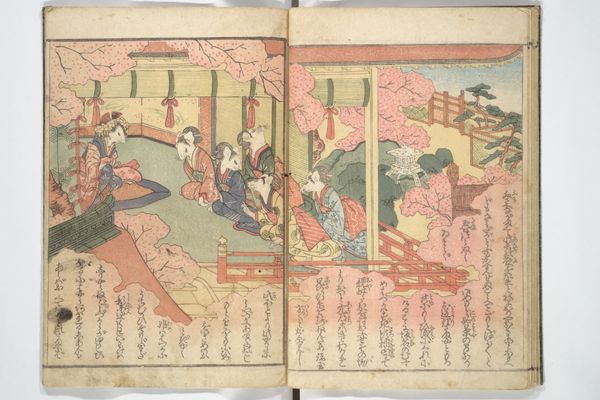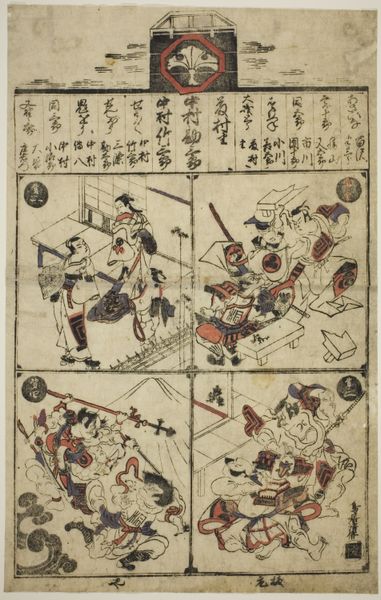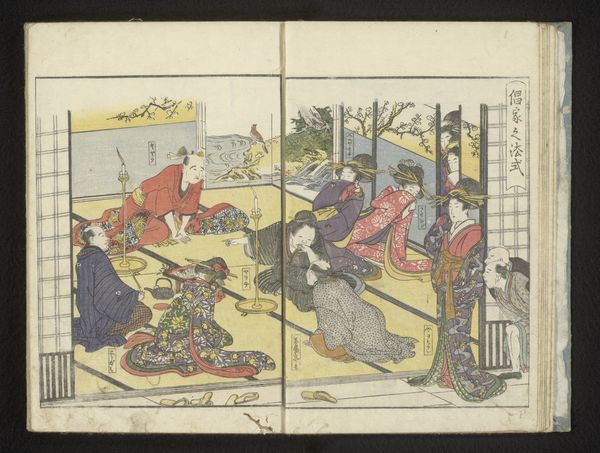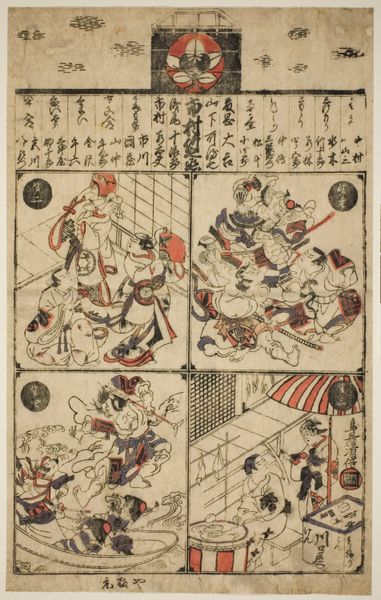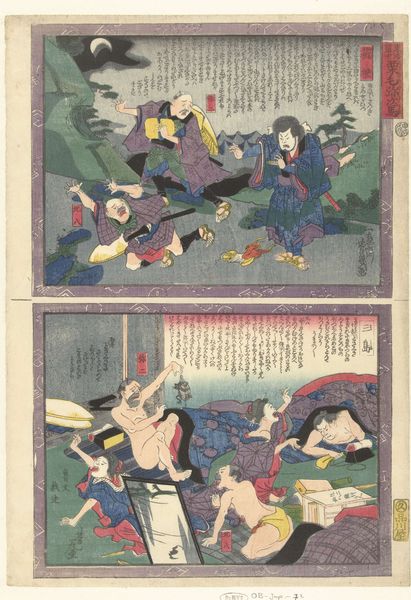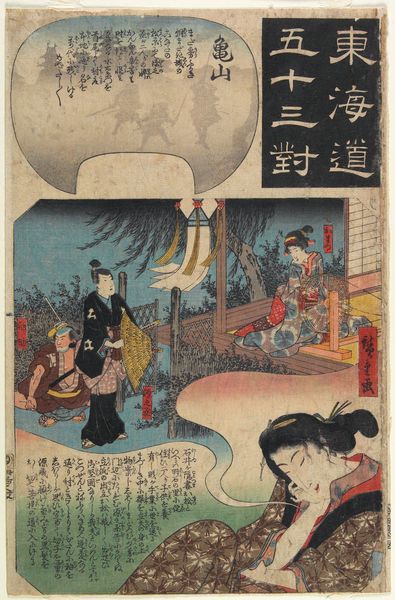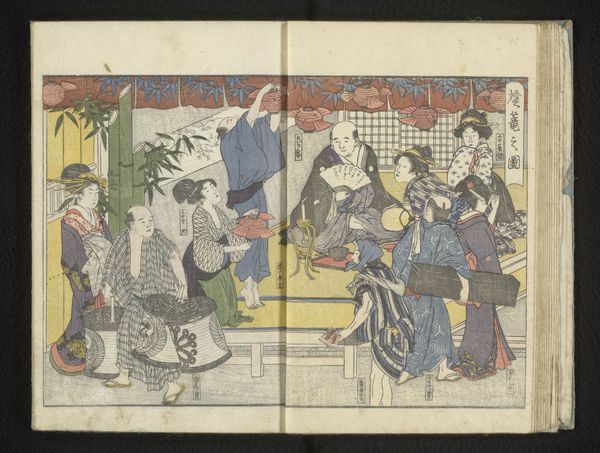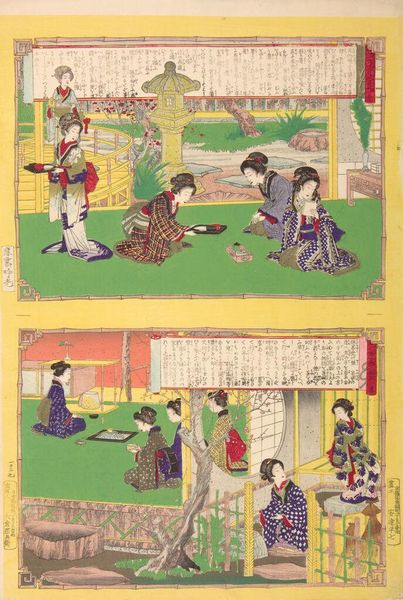
print, etching, woodblock-print
#
narrative-art
# print
#
etching
#
ukiyo-e
#
figuration
#
woodblock-print
#
calligraphy
Dimensions: height 375 mm, width 258 mm
Copyright: Rijks Museum: Open Domain
Editor: This woodblock print, “Shirasuka en Futagawa,” was created around 1860 by Utagawa Yoshiiku. It feels a bit chaotic, with figures in both the upper and lower registers in moments of conflict or surprise. What do you see in this piece, looking at it through a Materialist lens? Curator: Let's consider the means of its production. This ukiyo-e print involved a complex division of labor. An artist designed the image, but specialized woodblock carvers meticulously transferred the design onto woodblocks. Then, printers applied ink and carefully pressed the paper to create the final product. The materiality of the print—the paper, the ink, the wood itself—tells a story of a commercial industry catering to a growing urban population. Do you notice anything about how that process might relate to the subject matter here? Editor: Hmm, I guess that while these individual scenes might depict local events, their being part of a wider, reproducible set of images speaks to wider market and consumption. Curator: Precisely. Furthermore, the very act of mass-producing images democratized access to art and information. Ukiyo-e prints brought scenes of daily life, landscapes, and popular culture to a broader audience, impacting social values, knowledge, and identities of ordinary people. Think about what it means for people to have ready access to these images of squabbles in their towns? Editor: So, it’s less about the individual artistic vision and more about the whole system of creation, distribution, and consumption and the kind of impact the images had on everyday lives. Thank you for providing that new lens on art! Curator: Indeed! By examining the process of production, circulation, and reception, we gain deeper insights into the cultural work these objects perform. It's a powerful way to engage with art.
Comments
No comments
Be the first to comment and join the conversation on the ultimate creative platform.
